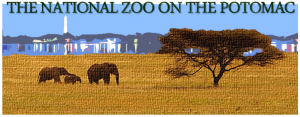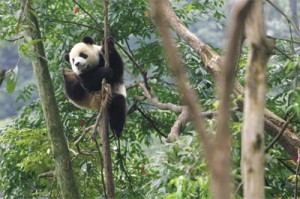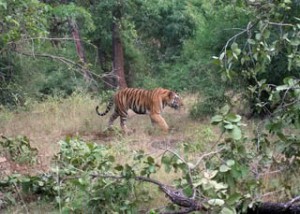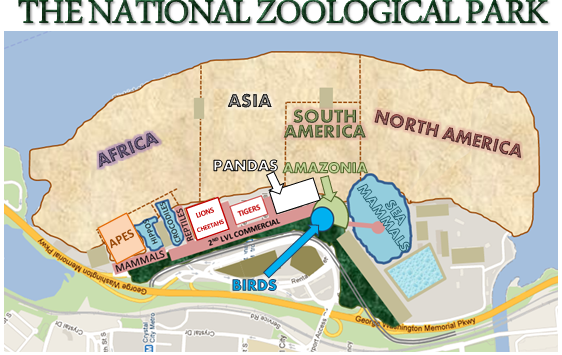 The DC Metro’s Silver Line to Dulles is nearly up and running—fingers crossed!—so maybe it’s time to address an egregious issue. Yes, I’m talking about Washington National Airport.
The DC Metro’s Silver Line to Dulles is nearly up and running—fingers crossed!—so maybe it’s time to address an egregious issue. Yes, I’m talking about Washington National Airport.
Ever since 9/11, the very existence of a major airport within a stone’s throw of the White House and Capitol has been a security nightmare and a homeland security absurdity. And, the constant cycle of aircraft taking off and landing so near the monuments and museums on the National Mall is an eye-sore and and ear-sore. With Dulles connected to the Metro and Baltimore-Washington International connected to MARC and Amtrak, it’s time to retire Washington National Airport. It’s small, it’s dangerous, it’s redundant, and it’s ugly.
However, although DCA is tiny compared to IAD and BWI, the site is still rather large, being an airport. The immediate question becomes what we can do with all that open land. I have a great idea: let’s relocate the National Zoo from its cramped and rugged terrain on Rock Creek.
Animals Need Their Space
 In order to pitch this idea, I have to go ahead and throw down a preliminary lay-out of the new site. I’ll put a better map at the bottom of this piece, but just take a look at the space difference between the current site and the proposed Potomac site. It’s an insane increase.
In order to pitch this idea, I have to go ahead and throw down a preliminary lay-out of the new site. I’ll put a better map at the bottom of this piece, but just take a look at the space difference between the current site and the proposed Potomac site. It’s an insane increase.
Every single exhibit expands astronomically. I applaud the Zoo’s efforts to expand the elephants’ territory at the current site, but the claustrophobic gully at the Rock Creek site simply cannot compete with a broad open space genuinely reminiscent of the African savannah.
And the Potomac site has room to provide open space for all sorts of plains-living creatures.
Now, I understand that zoo opponents have a good point that the best place for wild animals is in the wild. And, I support setting aside tons of wild space, and doing more to limit or even reduce human populations. But, alongside that, better and larger zoos serve a purpose until we can re-wild more of the planet.
Moving the National Zoo to the Potomac would be like freeing a dog from his carrier to run the yard. Ideal? No. But undeniably an improvement both for both the animals and their admirers.
The tarmac area of the airport could be transformed into a flexible plainscape, segments separated from each other and the river by a moat-and-sunken-wall system that would keep animals protected while creating the visual sense of an unbroken plain for Zoo visitors.
The segments could be repurposed and rotated as the needs of the animals required. The continental sectioning of the concept graphics is merely notional, to give an idea of what the Zoo could look like. Imagine a raised walkway or tramway, with occasional ground-level viewing rooms, giving visitors close-up views of the animals in a way that disturbs Zoo residents the least.
 The Zoo’s sea mammals, currently confined to a few pools at the bottom of the Rock Creek site, could enjoy an enormous open space around the extension where Gates 1 though 9 currently are. A water treatment facility could be built in the maintenance area nearby. That circular court at the end of the Terminal A extension could double as a mini-museum and viewing area.
The Zoo’s sea mammals, currently confined to a few pools at the bottom of the Rock Creek site, could enjoy an enormous open space around the extension where Gates 1 though 9 currently are. A water treatment facility could be built in the maintenance area nearby. That circular court at the end of the Terminal A extension could double as a mini-museum and viewing area.
A large aviary dome could be built over the Terminal A drop-off zone, the Terminal building itself transformed into an Amazonia much larger than the current site. The adjoining Terminal B platform could overlook a panda enclosure ten times larger than the space the iconic bears currently enjoy.
 And those poor cats in their tiny triangle at Rock Creek? Each species could have its own open space between the arms of Terminals B and C. The gate houses would look down over the pandas, the tigers, the lions, the cheetahs, and the Asian and African plainspaces.
And those poor cats in their tiny triangle at Rock Creek? Each species could have its own open space between the arms of Terminals B and C. The gate houses would look down over the pandas, the tigers, the lions, the cheetahs, and the Asian and African plainspaces.
The reptile house could be moved into the Terminal C arm, with secondary waterholes nearby giving the crocodilians and hippos their own places to play. A much larger mammal house, with a huge set of enclosures for the apes, would cap off the Zoo at the north end.
We could even incorporate the nearby Roaches Run Waterfowl Sanctuary into the Zoo space. Without the threat of bird-strike on aircraft, Zoo officials could really maximize the potential of that area to provide a safe space for migrating birds.
And, imagine a restaurant perched where the air traffic controllers currently work. Talk about dinner and a view!
Sounds Great, But Show Me The Money!
Which brings me to the closer. This isn’t a pie-in-the-sky fantasy. There’s incredible profit potential in the Potomac site. Not only is it much closer to Metro access than the Rock Creek site, but the commercial space of the current airport could be expanded, areas that now house airline desks and waiting areas repurposed as a sort of Mall at the Zoo.
Imagine that vast roadway along the inside curve of the airport, necessitated by the bustle of air traveler drop-off and pick-up, repurposed as walking parks and outside dining areas, all of it feeding revenues into the maintenance of the Zoo.
Visitors could ride the Metro in or use the current airport parking structures. Think of the “National Zoo on the Potomac” as a waterfront development similar to what we have at Georgetown, or the new Wharf project in Southwest, but on the south side of the river. (I’ve had some thoughts about how to make the Wharf more exciting, too!)
Like I’ve said about America’s rail system, the Capital’s zoo should not simply be a world-class destination, but a world-surpassing one. People would come from all over the Earth not just to see the seat of America’s government, our museums and monuments, but also to witness the spectacle of the most exciting new zoological park on our planet!
Let’s do it!


Recognition of the need for a larger no-fly zone could kick off massive DC reform | J. Nelson Leith
April 16, 2015 at 11:26 am
[…] Reagan National, use the airport’s land for a larger National Zoo, optimize the Metro to help people move easier to outlying airports, reform DC traffic and building […]